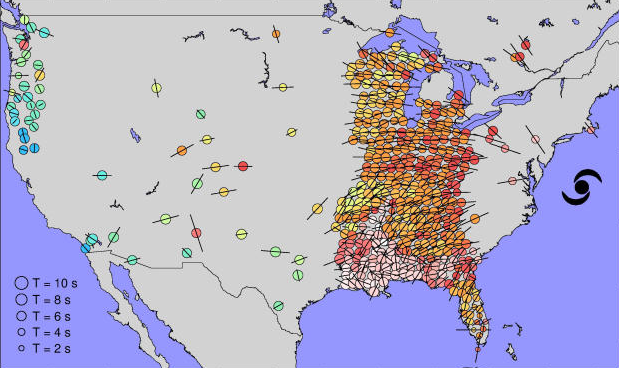Science News
Superstorms and Seismic Waves
April 23, 2013
by Molly Michelson

Did you feel a small tremor rumbling underground last fall? Seismometers as far west as Seattle lit up on October 30. But the source of the recorded energy didn’t come from an earthquake. It came from Superstorm Sandy, an extreme hurricane that hit the East Coast thousands of miles away. What the…?
At the recent Seismological Society of America's annual meeting, researchers presented their findings on seismic waves that are triggered by large storms and sometimes cause the ground at great distances to shake.
In the case of Sandy, the shaking was partly caused by the actual waves hitting the mid-Atlantic coastline. Of greater consequence were the waves colliding with other waves in the ocean, setting up a pattern of “standing waves” that reach the seafloor and transmit their energy. That force becomes seismic waves that travel through the crust and upper mantle under North America.
“They are not earthquakes; they are seismic waves,” says Keith Koper, director of the University of Utah Seismograph Stations. “Seismic waves can be created by a range of causes. We have beautiful seismic records of the meteor that hit Russia. That's not an earthquake, but it created ground motion.”
Earthquakes, storms, and meteors are only three causes of seismic waves. Seismic activity can also occur from mining, traffic, construction, and even elephants communicating.
At the same meeting, researchers presented findings that Hurricane Irene may have caused aftershocks to a 5.8 magnitude earthquake in Virginia in 2011.
This isn’t the first time large storms have been linked to seismic waves, Koper adds. “Hurricane Katrina in 2005 was recorded by a seismic array in California, and they could track the path of the storm remotely using seismometers.”
Image: Keith Koper, University of Utah Seismograph Stations